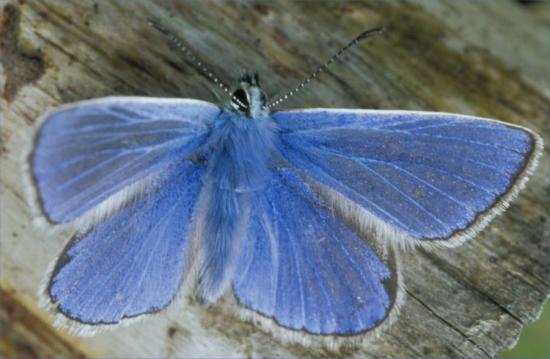Scotlands butterfly population shows winners and losers
7th July 2016

Scotland's butterfly population continues to have winners and losers in the face of climate change and habitat loss, the latest Scottish Biodiversity Indicator has reported.
The majority of Scottish butterflies can be conveniently classed as ‘specialists' or ‘generalists.' Scotland's specialist butterflies have declined by 67% since 1979. Three species declined significantly - small pearl bordered fritillary (over the past 10 years) large heath and grayling.
Generalists like Small Skipper and Essex Skipper are benefitting from climate change and have expanded their range into southern Scotland. And three generalist butterflies show climate-driven, significant long-term population increases - peacock, speckled wood and orange-tip.
Regular migrant butterflies, including the red admiral, are also growing in number,
Butterflies are a familiar sight in the summer months across Scotland. Some inhabit a range of habitats and include meadow brown and small tortoiseshell, commonly found throughout Scotland.
• The all-species and generalist species long-term trends were classed as showing no overall change
• Specialist butterflies have declined ‘significantly' over the long-term, with butterfly abundance in 2014 67% lower than in 1979.
Others are specialists that are more restricted and may be found only in one specific semi-natural habitat such as large heath, which is typically a wetland species.
Habitat loss and change through intensification of agricultural and forestry practices, climate change and increased nitrogen deposition are important factors linked to the declines.
In Scotland butterflies are monitored through the UK Butterfly Monitoring Scheme (UKBMS) www.ukbms.org Volunteers walk fixed route transects weekly from April to September each year. The indicator describes trends for 20 of the 34 regularly occurring butterfly species in Scotland at 436 sample locations.
Report here
http://www.snh.gov.uk/publications-data-and-research/our-changing-environment/scotlands-indicators/biodiversity-indicators/biodiversity-state-indicators-list/
Photo
Small Blue - from the Caithness Biodoversity Collection.
Photographer Ken Crossan
Full collection at http://www.caithness.org/nature/biodiversitycollection/photogallery/index.php?gallery=0



